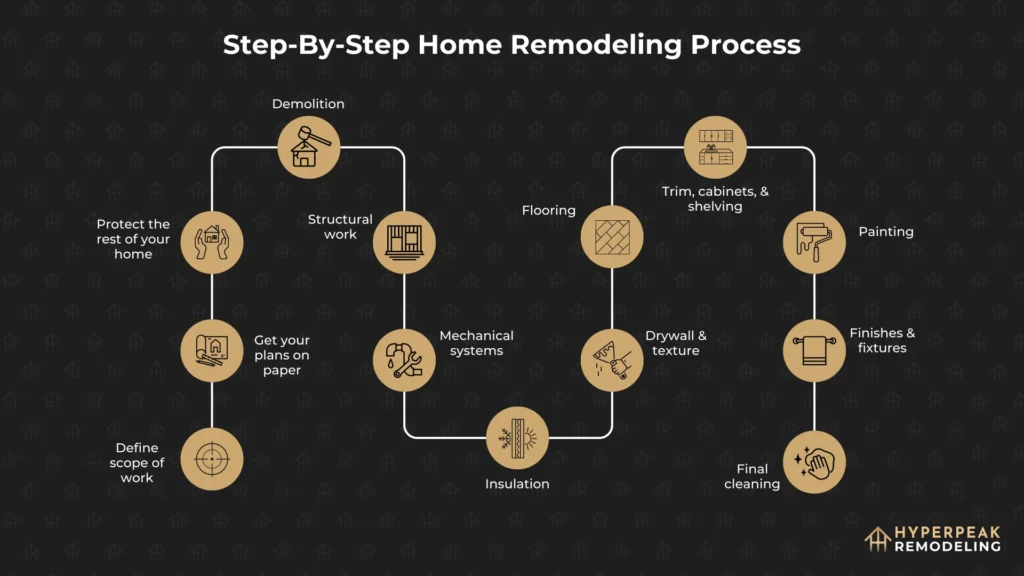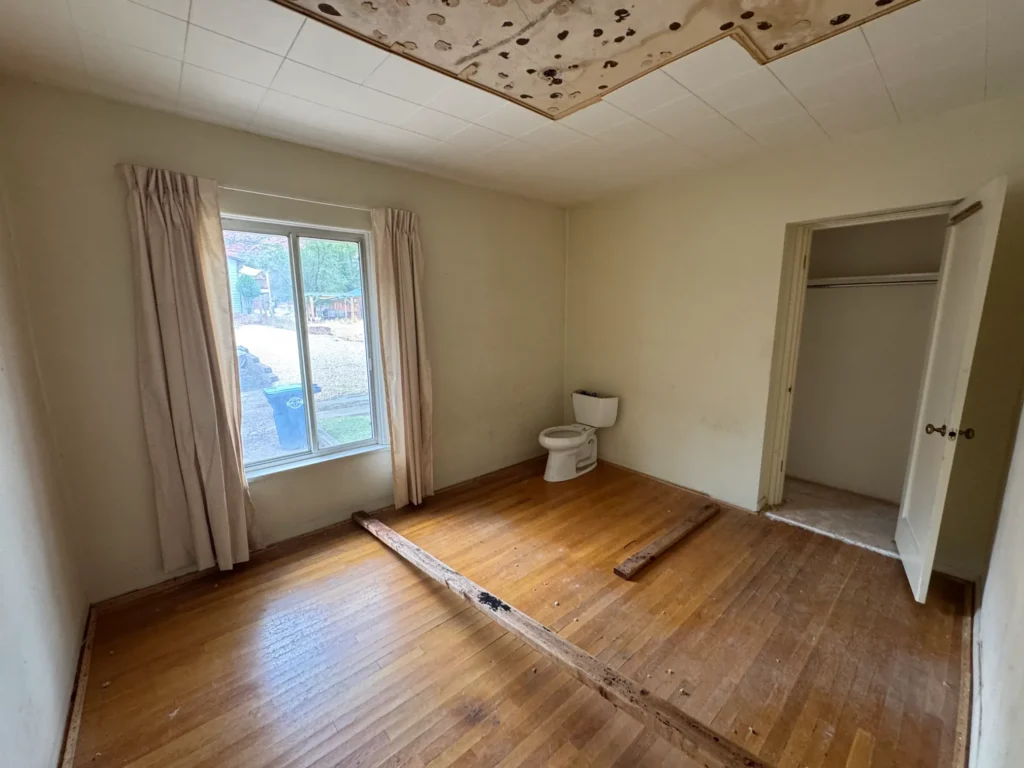Introduction
One of the biggest mistakes I see homeowners make during a remodel is skipping the basics. Remodeling doesn’t have to be complicated, but if you don’t follow the right order, you can blow your budget, delay your project, or end up frustrated with results that don’t match your vision.
I’m McKay, owner of Hyperpeak Remodeling, and I’ve been helping families in Southern Utah remodel their homes for 3 years. I’ve seen the good, the bad, and the “why did we do it that way?” Today, I’ll walk you through the exact steps of how to remodel your home in the right order so your project runs smoothly.

Step 1 – Define the Scope of Work
The very first step is knowing what you want to do. It sounds obvious, but you’d be surprised how often homeowners jump in without a clear plan.
For example, I once worked on a pool house where the plan was simple—add a roof to an existing brick structure, then add electrical and drywall. Midway through, the homeowner decided they wanted the roof raised for a golf simulator. That meant stopping everything, bringing in engineers, and reworking the design. It all could have been avoided with a clear plan upfront.
Tip: Write down your goals. Are you remodeling for function, style, or to boost resale value? Get clarity first, then move forward.
Step 2 – Get Your Plans on Paper
Once you know what you want, it’s time to get it in writing. This includes:
- Drawn-up plans
- Permit applications
- Engineer approvals
- Material selections
As my wife always says, you can’t keep everything in your head. Plans on paper give you a roadmap and keep everyone, from contractors to inspectors, on the same page.
Step 3 – Protect What Matters
Before the fun begins, protect your home. Cover the floors, walls, and HVAC. Lay down protective paper on walkways, tape off sensitive areas, and shield items with sentimental value (like grandma’s candle). Skipping this step is a surefire way to add stress and damage costs.
Step 4 – Demolition
Demo is everyone’s favorite HGTV moment, but it’s also where things can go wrong fast. Knocking down the wrong wall or leaving piles of debris can make your remodel a nightmare. Take it slow and remove things piece by piece.
Step 5 – Structural Work
This step includes framing, foundation pads, or any load-bearing changes. In kitchens and bathrooms, this could mean moving or adding walls. If you’re building new, it may include pouring concrete and running utilities under the slab.
Step 6 – Mechanical Systems
Now it’s time for plumbing, electrical, and HVAC. This step requires planning from earlier stages. For instance, a shower with two handles needs a completely different layout than a single-handle trim. Or cabinet placement may determine where outlets should go.
Step 7 – Insulation
Insulation can be blown into attics or sprayed into walls. The key is efficiency. Schedule it so it all happens at once—having trades come back multiple times only complicates things.
Step 8 – Drywall and Texture
With insulation in place, drywall goes up. This is also where you decide on textures—smooth, orange peel, knockdown, or another style. Unless you’re redoing the whole house, matching existing textures is usually best.
Step 9 – Flooring
Here’s where industry debates come in. Some say paint before flooring, but I recommend flooring first. Why? If you paint too soon, flooring and trim installers can damage your fresh walls. Install flooring like tile, LVP, or carpet now, then move to trim.
Step 10 – Trim, Cabinets, and Shelving
Baseboards, casing, and cabinets come next. Doing flooring first ensures the trim sits on top of it, eliminating the need for tacky quarter-round all over your house.
Step 11 – Painting
Now you can paint with confidence. Since the trim and flooring are already installed, painters can tape everything off and do it in one efficient pass.
Step 12 – Finishes and Fixtures
This includes countertops, plumbing fixtures, lighting, and hardware. It’s the part where your remodel really comes to life.
Step 13 – Final Cleaning
This step is often overlooked, but it makes all the difference. Hire a professional cleaning crew so you walk into a spotless, move-in ready home.
Avoiding Mistakes Along the Way
Even with the right order, mistakes happen. I’ve made plenty of mistakes myself as a general contractor. Homeowners make mistakes too. Usually by rushing, skipping planning, or trying to cut corners. Don’t worry, you’re not alone.
Final Thoughts
Remodeling your home is exciting, but only if it’s done in the right order. Follow these steps, and you’ll avoid wasted time, money, and stress. If you’re ready to start your home remodeling project and want to save some stress by having a professional team to guide you through it, we’d love to help. Book a free estimate call today and let’s bring your vision to life.







